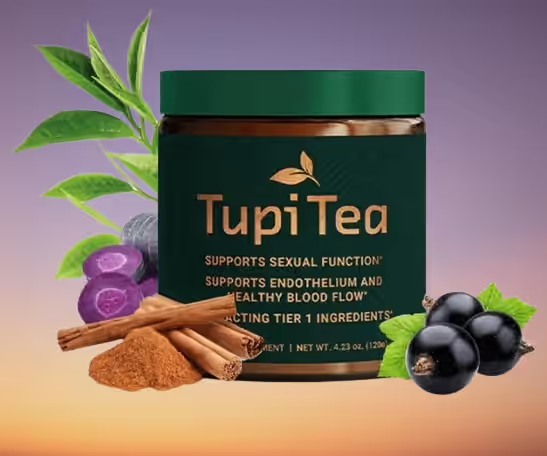Table of Contents
Earl Grey tea vs English Breakfast remains one of the most common comparisons in the world of tea enthusiasts. In fact, these two varieties stand as the most popular tea blends globally, each boasting a rich history of almost 200 years since their creation in the United Kingdom.
When it comes to understanding the difference between Earl Grey and English Breakfast, the distinction lies primarily in their composition. Earl Grey blends black tea leaves with bergamot essential oil, giving it that characteristic citrusy flavor. English Breakfast, however, is composed only of black tea leaves, typically including a mixture of Assam, Ceylon, and Kenyan varieties. Although both offer similar health benefits thanks to their black tea base, they differ in caffeine content. If you’re wondering about caffeine in English Breakfast tea vs Earl Grey, generally, English Breakfast wins the caffeine contest, making it potentially a better choice for your morning wake-up call.
In this guide, we’ll explore these timeless blends available in both tea bags and loose leaf forms, helping you decide which one deserves a spot in your morning routine. Whether you prefer a robust, full-bodied cup or something with floral notes, understanding these differences will transform your tea experience.
Flavor and Ingredient Differences

The fundamental difference between these two beloved teas lies in their core ingredients.
Bergamot Oil in Earl Grey vs Pure Black Tea in English Breakfast
Earl Grey stands apart primarily because of its defining ingredient – bergamot oil. This essential oil, pressed from the rind of bergamot oranges grown predominantly in Calabria, Italy (which accounts for 90% of the world’s bergamot oil production), gives Earl Grey its signature character. Meanwhile, English Breakfast remains a pure black tea blend without additional flavoring.
English Breakfast traditionally combines several robust black teas – typically Assam, Ceylon, and Kenyan varieties – creating a full-bodied experience. This careful blending was designed specifically to produce a strong, satisfying brew that pairs perfectly with milk and sugar.
Taste Profile: Citrusy and Floral vs Malty and Bold
The flavor profiles of these teas couldn’t be more distinct. Earl Grey offers layers of complexity – the depth of black tea foundation enhanced by bergamot’s bright citrusy notes. The result is slightly floral, refreshing, and notably aromatic.
Conversely, English Breakfast delivers a straightforward richness with stronger tannin presence. It’s characterized by its robust, malty flavor with hints of spice and moderate astringency. As one tea expert noted, “If flavor had a dress code, Earl Grey would be wearing a tailored suit and a splash of cologne”.
Variants: Lavender Earl Grey vs Traditional English Breakfast
Both teas have inspired numerous variations. Earl Grey’s adaptability has led to creative blends like Lavender Earl Grey, which combines the classic bergamot flavor with soothing lavender flowers. This therapeutic combination creates an enchanting and calming blend while maintaining the characteristic citrus notes.
Other popular Earl Grey variations include Earl Grey Green (using green tea leaves), Lady Grey (with additional citrus flavors), and Earl Grey Crème (with vanilla notes).
English Breakfast also has regional variations – Irish Breakfast contains more Assam leaves for a darker, more brisk bite, while Scottish Breakfast offers an even stronger, woodsier profile with an almost smoky edge.
👉 Taste the Premium Earl Grey Tea Everyone Is Talking About 👈
Caffeine and Energy Boost

For those seeking that perfect morning boost, the caffeine content between these classic brews deserves a closer look.
Caffeine in Earl Grey Tea vs English Breakfast
When comparing caffeination levels, English Breakfast takes the lead. A typical cup contains between 50-80mg of caffeine, making it a stronger morning companion. Earl Grey offers a slightly gentler experience with approximately 40-70mg per cup. This difference exists primarily because English Breakfast typically incorporates heartier black tea varieties like Assam, naturally containing more caffeine.
Despite having less caffeine than coffee (which averages 95-200mg per cup), both teas provide sufficient energy without the jitters often associated with coffee consumption.
Which Tea Wakes You Up Faster?
English Breakfast undoubtedly delivers a more substantial energy boost, making it ideal for those mornings when climbing out of bed feels particularly challenging. The robust nature of this blend helps you feel more alert almost immediately after consumption.
Yet, brewing time significantly affects potency. For maximum wake-up potential, steep English Breakfast for the full 5 minutes. Interestingly, Earl Grey’s bergamot oil contributes to mental alertness through its stimulating aroma, even though the oil itself contains no caffeine.
Caffeine Sensitivity: Which One’s Gentler?
For those with caffeine sensitivity, Earl Grey provides a more balanced energy lift. The bergamot oil’s calming properties create a unique effect—mental clarity without excessive stimulation. This makes Earl Grey particularly suitable for afternoon consumption when you need focus without disrupting evening sleep.
Furthermore, the moderate caffeine content in Earl Grey (around 20-58mg depending on brewing method) makes it an excellent choice for those seeking to reduce their caffeine intake without eliminating it entirely.
Both teas should be avoided late in the day if you’re sensitive to caffeine, as they can disrupt sleep patterns.
Health Benefits and Nutritional Value
Both Earl Grey and English Breakfast offer substantial health perks, stemming from their shared foundation as black teas.
Antioxidants in Black Tea: Shared Benefits
Black tea contains powerful antioxidants called polyphenols that fight free radicals and reduce inflammation. These include theaflavins (unique to black tea) that account for 3-6% of the polyphenols. Regular consumption can lower the risk of heart disease by 8%, reduce blood pressure, and decrease the threat of death from cardiovascular issues. Moreover, studies show drinking at least two cups daily lowers the risk of death from any cause by almost 13%.
Bergamot in Earl Grey: Mood and Digestion
The bergamot oil in Earl Grey provides unique advantages. Its natural aromatherapy qualities help reduce anxiety and depression by encouraging the brain to release serotonin and dopamine. Additionally, bergamot polysaccharides can relieve symptoms of inflammatory bowel disease and improve gut microbiota. This citrusy component makes Earl Grey especially effective for calming the stomach and supporting digestive health.
Milk in English Breakfast: Added Calcium?
English Breakfast traditionally pairs well with milk, adding nutritional benefits. A serving with milk provides approximately 43 calories, 2.2g protein, and 72mg calcium (7% of daily value). This combination creates a more substantial beverage without diminishing the tea’s antioxidant properties.
Which Tea Supports Focus Better?
Both teas contain L-theanine, an amino acid that works with caffeine to enhance alertness without jitteriness. English Breakfast’s higher caffeine content delivers a stronger energy boost, whereas Earl Grey’s moderate caffeine paired with bergamot creates a balanced focus – mental clarity without excessive stimulation.
👉 Discover the Best Earl Grey Tea for Your Perfect Sip 👈
Best Time and Way to Enjoy Each Tea
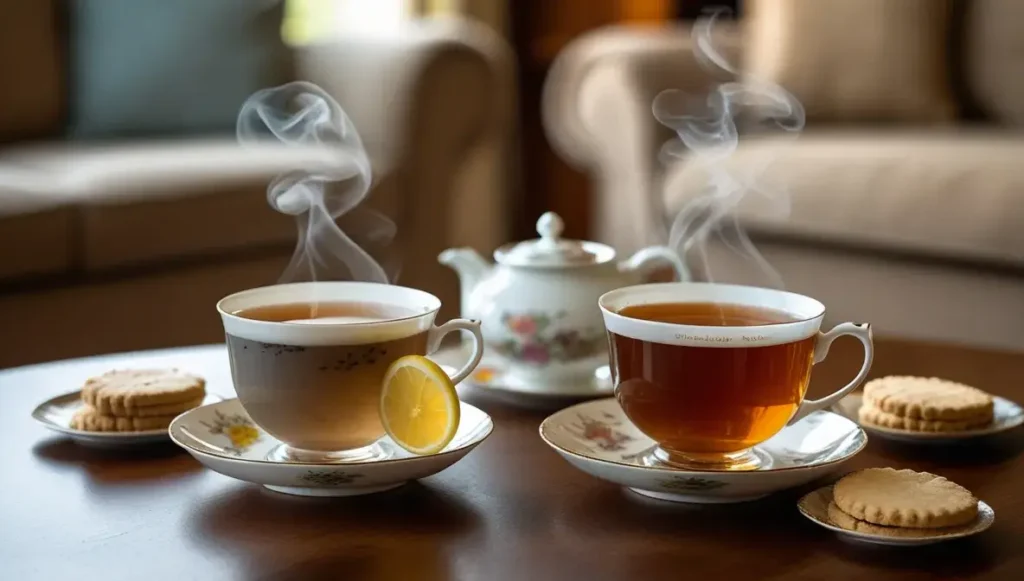
Knowing when and how to serve these classic teas makes all the difference in your tea experience.
Morning Routine: English Breakfast as a Wake-Up Brew
English Breakfast earned its name for good reason – it’s specifically designed as the perfect morning companion. Its robust, full-bodied nature provides that essential morning jolt many tea drinkers seek. This hearty blend stands up remarkably well to a traditional English breakfast of eggs, bacon, and toast, consequently becoming a ritual that signals the start of a productive day.
Afternoon Pick-Me-Up: Earl Grey’s Versatility
Earl Grey shines as an afternoon refreshment. Its lighter, aromatic qualities make it an ideal midday brew, offering mental alertness without overwhelming stimulation. Traditionally consumed between lunch and dinner, Earl Grey serves as the quintessential afternoon tea option.
With or Without Milk: Which Tea Handles It Better?
English Breakfast is almost always paired with milk, as its robust character withstands the addition without losing its distinctive qualities. Alternatively, Earl Grey performs equally well with or without milk – some purists prefer it plain or with lemon to fully appreciate its bergamot notes.
Iced vs Hot: Which One Works Both Ways?
Both teas transition beautifully between hot and cold preparations. Earl Grey creates refreshing iced tea with its citrusy undertones, making summer enjoyment delightful. English Breakfast, once iced, offers exceptional smoothness with tropical fruit and caramel notes.
Quick Comparison: Earl Grey Tea and English Breakfast

| Characteristic | Earl Grey | English Breakfast |
|---|---|---|
| Main Ingredients | Black tea + bergamot essential oil | Blend of Assam, Ceylon, and Kenyan black teas |
| Flavor Profile | Citrusy, floral, aromatic | Robust, malty, bold with hints of spice |
| Caffeine Content | 40-70mg per cup | 50-80mg per cup |
| Unique Health Benefits | – Reduces anxiety and depression (bergamot oil) – Improves gut health – Supports digestive health | Higher caffeine content for stronger energy boost |
| Best Time to Drink | Afternoon refreshment | Morning wake-up drink |
| Milk Compatibility | Works well with or without milk | Traditionally served with milk |
| Popular Variants | – Lavender Earl Grey – Earl Grey Green – Lady Grey – Earl Grey Crème | – Irish Breakfast (more Assam) – Scottish Breakfast (stronger, woodsier) |
| Energy Effect | Balanced energy with mental clarity | Stronger, immediate energy boost |
| Traditional Pairing | Afternoon tea | Traditional English breakfast foods |
👉 Indulge in Top-Quality Earl Grey Tea, Freshly Packed Today 👈
Final Verdict: Earl Grey Tea vs English Breakfast

After exploring these two beloved teas, we can see that both Earl Grey and English Breakfast offer unique experiences for tea enthusiasts. Undoubtedly, their enduring popularity stems from their distinctive characteristics rather than any inherent superiority of one over the other.
English Breakfast clearly stands as the stronger morning companion with its higher caffeine content and robust flavor profile. The blend of Assam, Ceylon, and Kenyan black teas creates that perfect wake-up call many of us need to start our day. Additionally, its full-bodied nature pairs wonderfully with milk and complements traditional breakfast foods.
Earl Grey, however, shines with its bergamot-infused elegance and versatility. The citrusy notes and aromatic qualities make it an ideal afternoon refreshment, providing mental clarity without excessive stimulation. Besides its pleasing flavor, bergamot oil offers unique health benefits for mood and digestion that pure black tea blends cannot match.
Your choice between these classics ultimately depends on personal preference and specific needs. Perhaps you require that extra caffeine kick from English Breakfast to combat morning grogginess. Otherwise, you might prefer the balanced energy and aromatic experience of Earl Grey during afternoon hours.
Many tea lovers actually keep both varieties in their cupboards for different occasions and moods. Both teas deliver the antioxidant benefits of black tea while offering distinctly different sensory experiences. Whether you prefer your tea with milk, plain, hot, or iced, these timeless blends have rightfully earned their place as the world’s most popular teas for nearly two centuries.
The next time you reach for your morning cup, consider which qualities matter most to you – the bold, malty strength of English Breakfast or the fragrant, citrusy character of Earl Grey. Either way, you’ll be participating in a rich tea tradition that continues to bring comfort and pleasure to millions worldwide.
Key Takeaways
Understanding the differences between Earl Grey and English Breakfast tea helps you choose the perfect morning companion based on your caffeine needs, flavor preferences, and daily routine.
• English Breakfast delivers stronger morning energy with 50-80mg caffeine per cup versus Earl Grey’s 40-70mg, making it ideal for wake-up calls
• Earl Grey offers unique mood benefits through bergamot oil, which reduces anxiety and supports digestion while providing balanced mental clarity
• Flavor profiles are distinctly different – English Breakfast is robust and malty, while Earl Grey is citrusy and floral with aromatic complexity
• Timing matters for optimal enjoyment – English Breakfast excels as a morning brew, while Earl Grey shines as an afternoon refreshment
• Both teas provide shared health benefits from black tea antioxidants, including reduced heart disease risk and improved cardiovascular health
The choice ultimately depends on whether you prioritize a stronger caffeine boost (English Breakfast) or prefer a more balanced, aromatic experience with additional wellness benefits (Earl Grey). Many tea enthusiasts keep both varieties to match different times of day and personal needs.
👉 Enjoy Premium Earl Grey Tea Crafted for True Tea Lovers 👈
FAQs
Q1. What are the main differences between Earl Grey and English Breakfast tea? Earl Grey is flavored with bergamot oil, giving it a citrusy and floral taste, while English Breakfast is a blend of pure black teas with a robust, malty flavor. English Breakfast typically has slightly more caffeine and is often consumed with milk, whereas Earl Grey can be enjoyed with or without milk.
Q2. Which tea is better for a morning energy boost? English Breakfast tea generally provides a stronger energy boost due to its higher caffeine content (50-80mg per cup) compared to Earl Grey (40-70mg per cup). Its robust flavor also makes it a popular choice for kickstarting the day.
Q3. Are there unique health benefits to drinking Earl Grey tea? Yes, Earl Grey offers some unique benefits due to its bergamot oil content. It may help reduce anxiety and depression, improve digestion, and support gut health. Both Earl Grey and English Breakfast provide antioxidants that can lower the risk of heart disease and improve overall health.
Q4. Can both teas be enjoyed iced as well as hot? Absolutely. Both Earl Grey and English Breakfast transition well between hot and cold preparations. Earl Grey makes a refreshing iced tea with its citrusy undertones, while iced English Breakfast offers a smooth taste with hints of tropical fruit and caramel notes.
Q5. How do the flavor profiles of these teas differ? Earl Grey has a complex flavor profile with citrusy and floral notes from the bergamot oil, creating a refreshing and aromatic experience. English Breakfast, on the other hand, offers a straightforward, full-bodied taste that’s malty, bold, and slightly spicy, with moderate astringency.
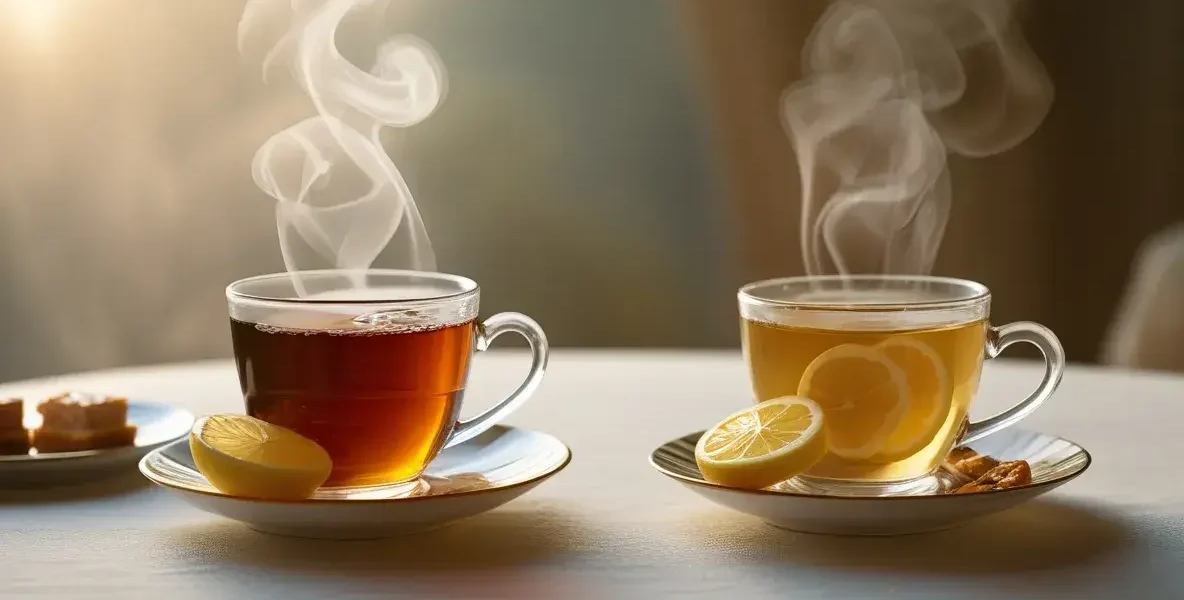
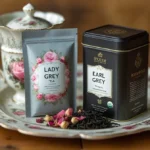

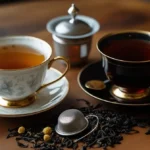
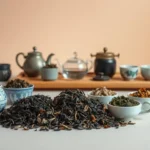
![Jasmine Tea vs Green Tea Benefits: Which Gives Better Health Results? [2025] jasmine tea vs green tea benefits](https://www.goteaworld.com/wp-content/uploads/2025/09/jasmine-tea-vs-green-tea-benefits-150x150.webp)

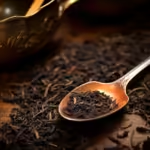


![Pu Erh Tea vs Green Tea: Which is Better for Daily Health? [2025] pu erh tea vs green tea](https://www.goteaworld.com/wp-content/uploads/2025/10/pu-erh-tea-vs-green-tea-150x150.webp)


